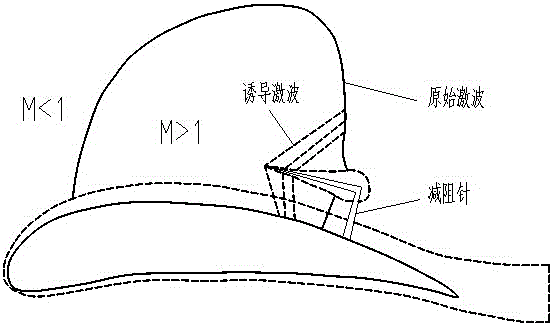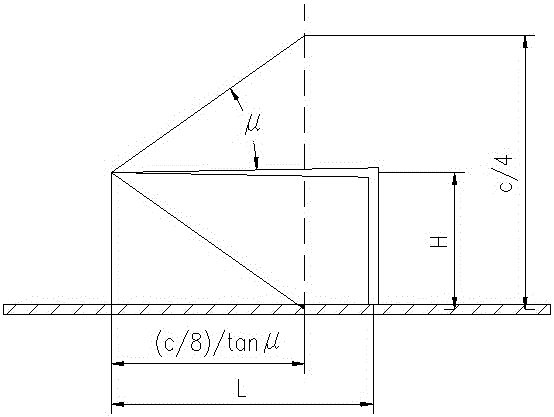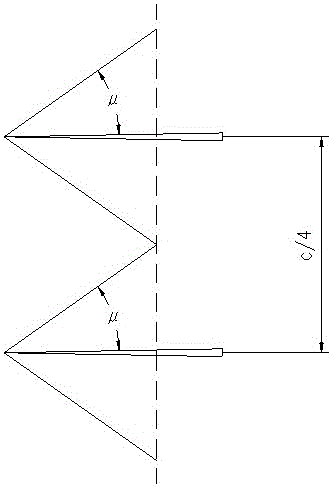Drag reduction needle passive control method and device for wing shockwave control
A wing and shock wave technology, applied to the fuselage, aircraft parts, transportation and packaging, etc., can solve the problems of increased total resistance, change of airfoil aerodynamic characteristics, increase of viscous resistance, etc. sensitive effect
- Summary
- Abstract
- Description
- Claims
- Application Information
AI Technical Summary
Problems solved by technology
Method used
Image
Examples
Embodiment Construction
[0024] The specific implementation manners of the present invention will be described in detail below in conjunction with the accompanying drawings.
[0025] The invention discloses a passive control device for drag-reducing pins used for wing shock wave control, which specifically includes aircraft wings and drag-reducing pins arranged on the aircraft wings; the drag-reducing pins are fixed on the aircraft wings The shock wave area on the surface, the drag reducing pin is L-shaped, and one end of the drag reducing pin is vertically fixed on the shock wave area on the upper surface of the aircraft wing. The goal of reducing wave drag is achieved by interfering with the initial strong normal shock wave by the drag-reducing needle placed in the shock wave area on the upper surface of the wing, and by generating a series of oblique shock waves to replace the initial normal shock wave.
[0026] The purpose of the present invention is mainly to: propose a kind of transonic wing sho...
PUM
 Login to View More
Login to View More Abstract
Description
Claims
Application Information
 Login to View More
Login to View More - R&D
- Intellectual Property
- Life Sciences
- Materials
- Tech Scout
- Unparalleled Data Quality
- Higher Quality Content
- 60% Fewer Hallucinations
Browse by: Latest US Patents, China's latest patents, Technical Efficacy Thesaurus, Application Domain, Technology Topic, Popular Technical Reports.
© 2025 PatSnap. All rights reserved.Legal|Privacy policy|Modern Slavery Act Transparency Statement|Sitemap|About US| Contact US: help@patsnap.com



